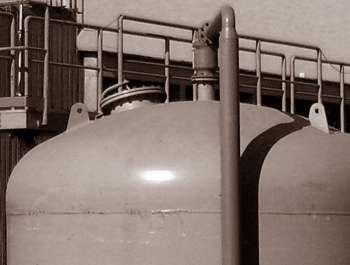
BIOFILTRATION: how to get rid of Nitrate and Ammonium contamination in ground waters
Ammonia is difficult to remove from water.
- DATE:
04/02/2018 - CATEGORY:
Article - LANGUAGE:
EN
Treatment of industrial wastewater by microbial degradation is one of the most important waste management processes. However, industrial wastewater frequently exhibits characteristics that adversely affect microbial degradation processes, such as complex components, toxicity, inhibition of biological treatment systems, and refraction to biodegradation. Furthermore, because of industrial production processes, several sources of chemical industrial wastewater are saline, which also adversely affects biological processes.
When it comes to deal with Industrial wastewater, it’s not about compound-specific treatments anymore: rather it is about admixture-specific treatments, often a combination of two or more steps, capable of minimizing interferences among groups and allowing the removal of contaminants.
To resolve problems caused by complex components, toxicity, inhibition, recalcitrant compounds, and salinity, optimal operating conditions such as hydraulic retention time (HRT) and mixed liquor suspended solids (MLSS) concentration should be considered. Designing Effluent Treatment Plants (ETPs) for some optimal values of hydraulic retention time (HRT) and biomass concentration (MLSS) can hugely affect the removal of several refractory organic compounds, resulting in improved bioavailability of carbon and energy by microorganisms, thus mitigating the adverse effects of industrial wastewater treatment.
Until recently, when waste segregation was not possible at the source, big and sophisticate systems had to be installed to deal with the complex substrate of unpredictable composition and behavior.
Between 2015 and 2016 a study on pretreatment of a low strength and poorly degradable textile dyeing wastewater was carried out using an anaerobic reactor. Experimental results indicated the anaerobic pretreatment not only was a very feasible process to decolorize and pre-treat the textile dyeing wastewater. Moreover, after the anaerobic pre-treatment, the BOD5/COD values in the wastewater rose from 0.3 of inflow to 0.46 of outflow, unequivocally assessing the improved biological treatability of the stream.
“after the anaerobic pre-treatment, the BOD5/COD values in the wastewater rose , unequivocally assessing the improved biological treatability of the stream”
Anaerobic degradation processes have always been considered to be slow and inefficient, in comparison to aerobic degradation. However, the anaerobic degradation not only decreases the COD and BOD5 in the waste water; also, the anaerobic bacteria could break down some persistent organic pollutants, such as phenols and high molecular weight polycyclic aromatic hydrocarbons (PAH), which show little or no reaction to aerobic degradation.
“anaerobic bacteria could break down some persistent organic pollutants, such as phenols and high molecular weight PAH, which show little or no reaction to aerobic degradation”
The pilot testing campaign was sponsored by Client to meet environmental limits at discharge with just minor investment on the existing ETP.
What’s behind BioConversion, how it’s been implemented, the real advantages and its future prospects, all this and lot more is available for consultation at Labyrinth The Anaerobic BioConverter
Thanks for the interest.
NOTES FROM THE AUTHOR: As shown in the previous Article Eye on Textile Wastewater with the single anaerobic and aerobic reactors, the combination of the anaerobic and aerobic reactor is more efficient in organic pollutants degradation.
The advantages of the combined system are as follow:

Ammonia is difficult to remove from water.

As water becomes an increasingly expensive resource with mains, sewerage and trade effluent charges all rising...